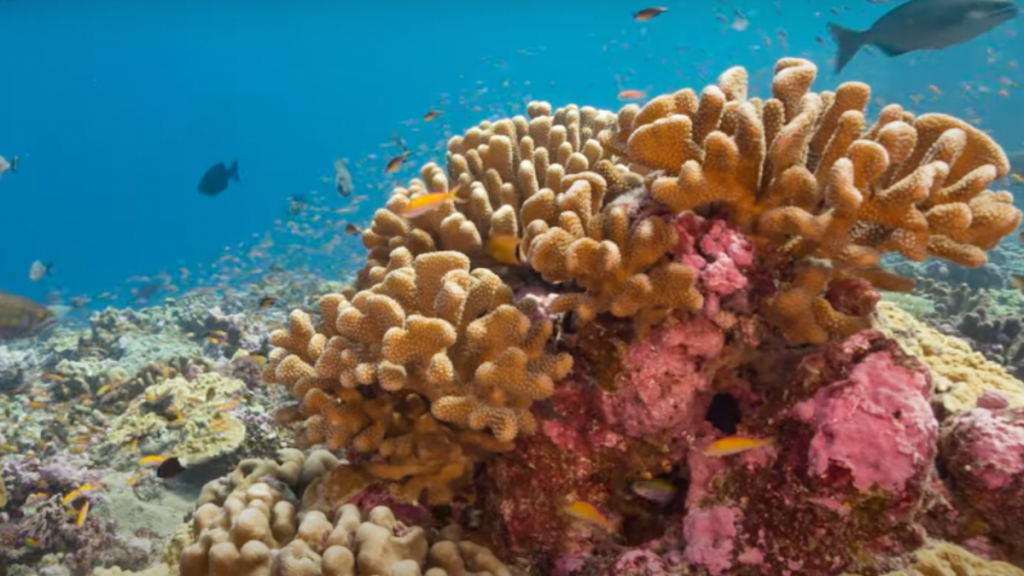A new study has found that damaged or diseased coral reefs can be rejuvenated with recordings of healthy reef systems.
Coral reefs are abundant ecosystems filled with plants and aquatic life that bumble with sound when they are thriving. And the Woods Hole Oceanographic Institution at MIT recently learned that those sounds help coral larvae decide where to grow.
“So a lot of us think about reefs as these really tranquil, calm places,” Nadège Aoki, a doctoral candidate at WHOI, said in a YouTube video. “But they’re actually bursting with sound. And all of that sound produces a really distinct acoustic signature for a healthy reef.”
As adults, coral is immobile. But as larvae, they swim or drift and select their habitat. Once they choose a system to settle in, they will attach themselves to the seafloor and grow. Previously, scientists knew that the larvae would make their selection based on chemical and light cues. But it wasn’t until now that they understood the importance of sound.
In 2022, WHOI scientists conducted two studies on separate three reef systems. A paper published in Royal Society Open Science explained that after those studies, they learned that “you can actively induce coral settlement by playing sounds.”
“You can go to a reef that is degraded in some way and add in the sounds of biological activity from a healthy reef, potentially helping this really important step in the coral life cycle,” Nadège wrote in a press release.
Sound is a Tool That Could “Potentially” Rebuild Dying Coral Reefs
For the study, WHOI collected Porites astreoides larvae and left them in cups near three reefs along the coast of St John Island. One reef called Tektite was relatively healthy while the others, Salt Pond and Cocoloba, were degraded.
The researchers left underwater speakers next to Salt Pond and played the sounds of a healthy coral reef system. They left cups one, five, 10, and 30 meters from the speakers and let the sounds play for three nights. They left the same number of cups the same distances away from the other two reefs. But did not play the sounds.
When they returned, they saw that the coral larvae settled in Salt Pond at rates up to 1.7 times higher than Tektite or Cocoloba. The highest settlement was five meters from the speakers. But even the cups sitting 30 meters away had more settlement than any spot near the other two reefs.
The second study, done two months later, had the same results.
“The fact that settlement is consistently decreasing with distance from the speaker, when all else is kept constant, is particularly important because it shows that these changes are due to the added sound and not other factors,” marine biologist Aran Mooney wrote in the release.
Aran said that the information gives scientists an easily accessible tool that could “potentially” rebuild important reef systems.
“It appears to be one of the most scalable tools that can be applied to rebuild reefs,” added microbial ecologist Amy Apprill. “So we’re really excited about that potential.”
You can find the source of this story’s featured image here.
Want to be happier in just 5 minutes a day? Sign up for Morning Smile and join over 455,000+ people who start each day with good news.



